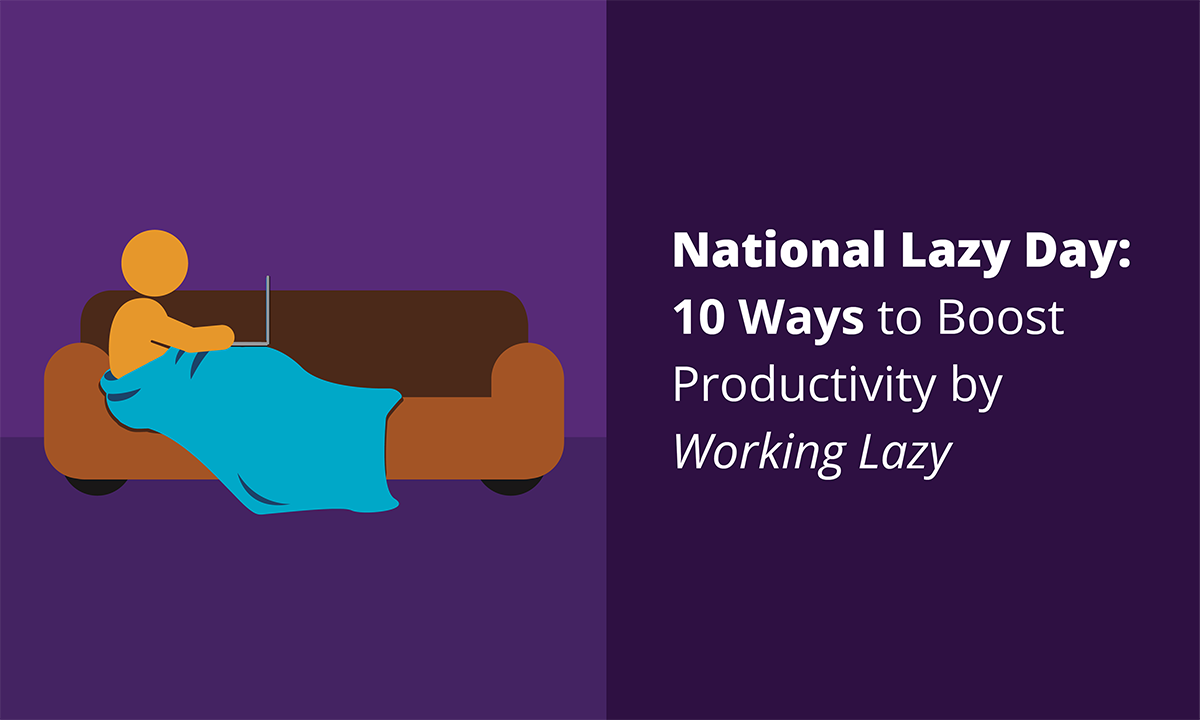
National Lazy Day: 10 Ways to Boost Productivity by Working Lazy
During my interview with some awesome people, I may have mentioned my love for working lazy. They understandably got very curious; who says they’re lazy in an INTERVIEW!?
But, something must have gone well because here I am a year later, writing my first blog post for Broadcat! I’ve even overheard some of my team bring up working lazy a few times; it’s catching on.🔥Our productivity has increased, it’s saved us tons of time, and it’s allowed us to start even bigger projects in-house! 📈 I hope these wins encourage you to embrace lazy work, too—keep reading for some tips and tricks.
 No catch, just a little work | Source: CBC's Schitt's Creek via Giphy
No catch, just a little work | Source: CBC's Schitt's Creek via Giphy
So, what the heck does “working lazy” mean? 🤔 Let’s start with what it’s not… it’s not using bad shortcuts or passing off the work to anyone else, and it’s definitely not doing the bare minimum to get the job done.
Instead, it’s a way of making your daily tasks easier and more manageable. Working lazy is all about the actions you establish now to reduce the amount of work you’ll do on the same or similar routines in the future. Working lazy does take a time investment in the present, but it’s an investment that pays off in many ways in the near future. One of those payoffs is actually getting to enjoy the next National Lazy Day… Just like we will when we repurpose this post next year—instead of taking the time to write a whole new one! #SoMeta
I guess there’s one catch, though: working lazy is actually… well… a LOT of initial work. Here’s what you need to know.
 Less repetitive work is always worth it | Source: CBC's Schitt's Creek via Giphy
Less repetitive work is always worth it | Source: CBC's Schitt's Creek via Giphy
- Take structured notes. 📝 You may not be good at this at first, but with practice you’ll understand what helps you get tasks done. Plus, documentation is key to keeping our minds clear, which gives us the bandwidth to solve problems creatively. Added bonus? This helps communication throughout your team if the notes are shared or on the company intranet.
- Take notes to take notes. 📆 Sounds silly, right?! But this is all about planning ahead. For example, before a meeting, take notes on what you want to take notes on. Then, when you're taking notes during the meeting, you'll have a clear idea of what you want to document and what your takeaways are. You won't have to spend time later trying to decipher your own records.
- Implement structure. 🏗️ Hunting for a file or searching in vain for a project board eats up time and really hurts your productivity… and if YOU can’t find it, chances are others might be having issues too. Yikes! So much time to relax later, wasted. Work with your team on implementing structures for your routines, whether it's about locating files, accessing notes, or even learning how to do a task.
- Make templates! 👬 I’ve worked in many places where some things were being done from scratch… each time! Repetitive tasks like drafting monthly meeting agendas or creating invoices are just begging for templates. Remove those time sinks from your AND your team's plate anytime you possibly can by developing templates; you might not see benefits immediately but think about the future time you’ll save.
- Learn your tools and how they can work FOR you! 🛠️ Ever catch yourself pressing the “enter” button to get your text spaced just right? It’s likely that the program you’re using has paragraph styling settings. Put the time and effort into creating default styles (or ask a teammate for help) and next time you open that Doc, you can get right to work!
 It’s a team effort | Source: CBC's Schitt's Creek via Giphy
It’s a team effort | Source: CBC's Schitt's Creek via Giphy - Break down your tasks, and when you think you’re done, break them down even more! ✅ No one writes a book in a day. Do a sentence a day until it’s all done. This helps make large and daunting tasks feel easy breezy, and can help combat procrastination. Think I wrote this blog post in a day? Think again! I outlined, then drafted the intro a few days later, then I wrote the easiest paragraphs for some quick wins, and then I focused on the more difficult parts. I wrapped it up with setting aside time for review and editing. Task breakdowns FTW!
- Simplify, simplify, and then simplify again. 🪷 So much of our work can have steps that are unnecessary, redundant, or even overkill. There’s always room for improvement when processes are put into place. Take the time to figure out where you can trim unnecessary elements or how you can combine several similar steps into one. At Broadcat, for example, our designers have to make and export lots of images. Instead of clicking a bunch of menu buttons over and over again, we combine all the steps to make exporting a simple one-click operation.
- Create automations for processes that are repetitive, time-consuming, or just plain boring. 🤖 That can go a long way to saving time and, more importantly, effort… we ARE trying to work lazy after all! The benefits include a faster production pipeline, less human errors (though computers aren’t perfect either), and more time relaxing at the beach later. Want to implement this yourself? Take a look at your project management tool. I'll bet there's a "create automation" feature that triggers notifications when it's time for someone else to take over the next phase of a recurring project. And if you're not using a project management solution, get on it!
- Be curious and learn everything you can, for fun. 🔎 A lot of stuff that you do in your free time can be helpful at work, especially if your hobbies align with it. That curiosity is contagious as well and helps foster an environment of sharing that’s crucial for creative problem-solving, especially in a team.
- And finally, find meaning in your work. 💜 The way you feel about work can be the difference between being lazy at work and working lazy at work. Many people don’t get along with one of those two types of co-workers, but you're already working lazy by reading this blog, so my bet is that you’re the latter. By working lazy, everyone will love you even more!! As for me, I love making peoples’ lives easier through design.
What does this have to do with compliance? Well, you didn’t think I’d write a lazy blog post without plugging Broadcat, did you?! Our job aids are customizable, so you don’t spin your wheels creating custom content from scratch—use Broadcat’s tools instead! Just drop in your logo, replace the contact info… and then set your OOO and head straight for the couch. 📺
I say I love working lazy, but maybe I'm just a workaholic and want to get as much done as possible… Either way, the work that I do helps my team work more efficiently, simplifies processes, and ultimately I hope it allows them—and you!—to celebrate Lazy Day more than once a year, too.
P.S. Looking for more lazy resources? Listen to these:
- Hidden Brain (podcast): Finding Meaning At Work: How We Shape And Think About Our Jobs
- The Academic Imperfectionist (podcast): How to work as efficiently as you procrastinate
- Jones Loflin (YouTube): Is it time to determine the time for your task list items?
